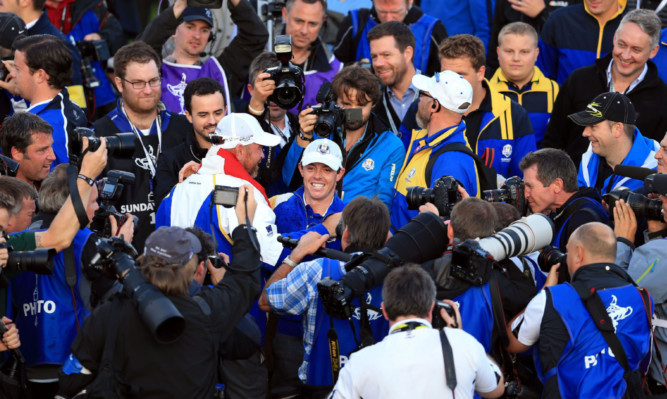You thought the Ryder Cup was about golf didn’t you?
I was fortunate enough to tick the world’s greatest sporting contest off the bucket list at the weekend and it was a truly amazing experience.
The atmosphere was electric, Gleneagles was glorious and the right side won the day (at least from where I was standing.)
But what struck me, and which might not be immediately evident to the hundreds of millions who watched Paul McGinley’s men go into battle with Tom Watson’s crew on television, is that the Ryder Cup is a lot more than just a golf tournament.
It is a juggernaut the likes of which I’ve never experienced first-hand before.
Think of it this way: any bank manager worth his or her salt would laugh you out of their office if you put forward a business plan involving just 24 golfers playing intermittently over three days.
I’d imagine those belly laughs would only grow louder once you explained that spectators were going to have to cough up hundreds of pounds for a ticket to likely only catch a fleeting glimpse of the action.
But that bank manager would be wrong.
The Ryder Cup doesn’t follow normal commercial logic. It is a money-making machine.
On Monday, First Minister Alex Salmond declared Gleneagles as the best golf tournament ever played.
I disagree with that assessment but it may be that the gem in the Glen proves to be the sport’s biggest ever tournament from a commercial standpoint.
When all is said and done, it is expected the economic impact of the Ryder Cup on Scotland could exceed £100 million.
That is a phenomenal sum of money. But it is one I can believe having seen with my own eyes what a Ryder Cup entails.
More than 45,000 people flooded through the gates of Gleneagles on each day with their wallets wide open.
The tented village housing the shops and bars was heaving, and there was no lack of interest in the watch concession where prices would make your eyes water.
Accommodation was only available at the type of premium that you might expect you’d bought the property rather than just rented it for a couple of nights.
And at Edinburgh Airport there were more than 150 private jets parked up waiting for their high-roller owners.
The Ryder Cup is not a golf tournament it is a week-long feeding frenzy.
And for Scotland it is a shop window like no other as more than 600 million pay-TV subscribers looked on worldwide.
And those stunning images from that famous corner of Perthshire cannot just be allowed to fade to the back of minds.
The Scottish global tourism marketing accelerator must continue to be pressed, starting at this week’s Dunhill tournament.
And the foot should never come off the pedal.
